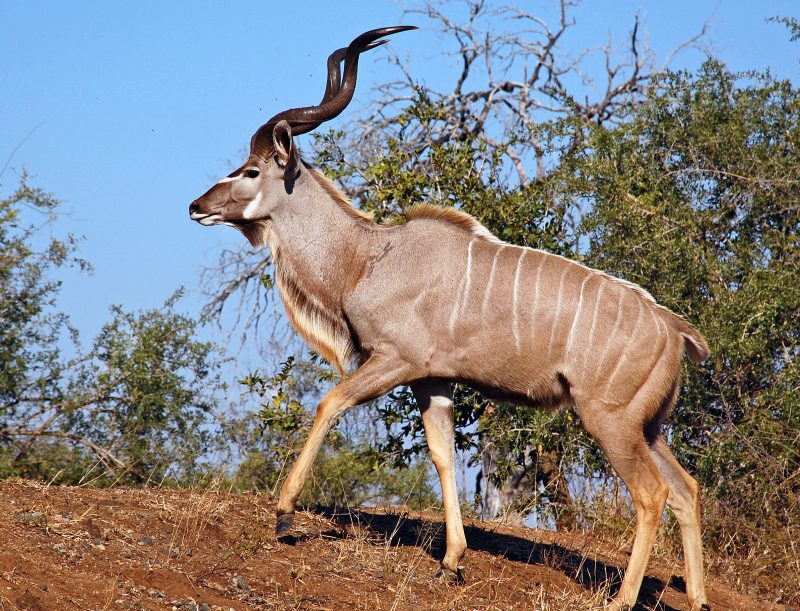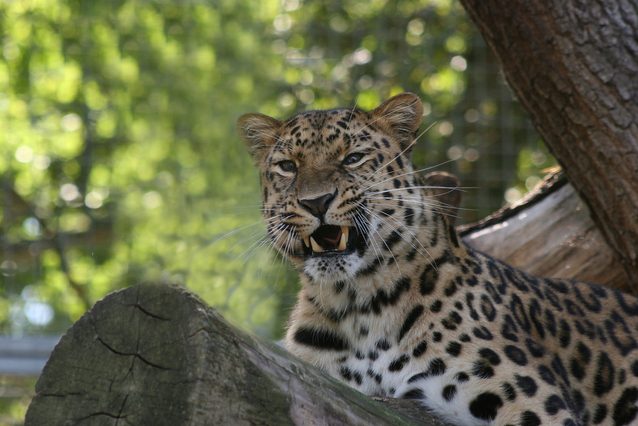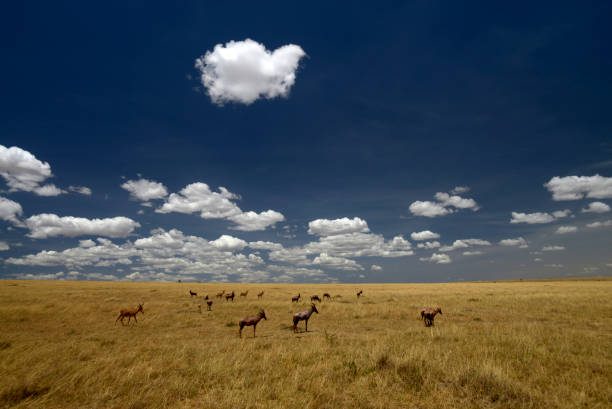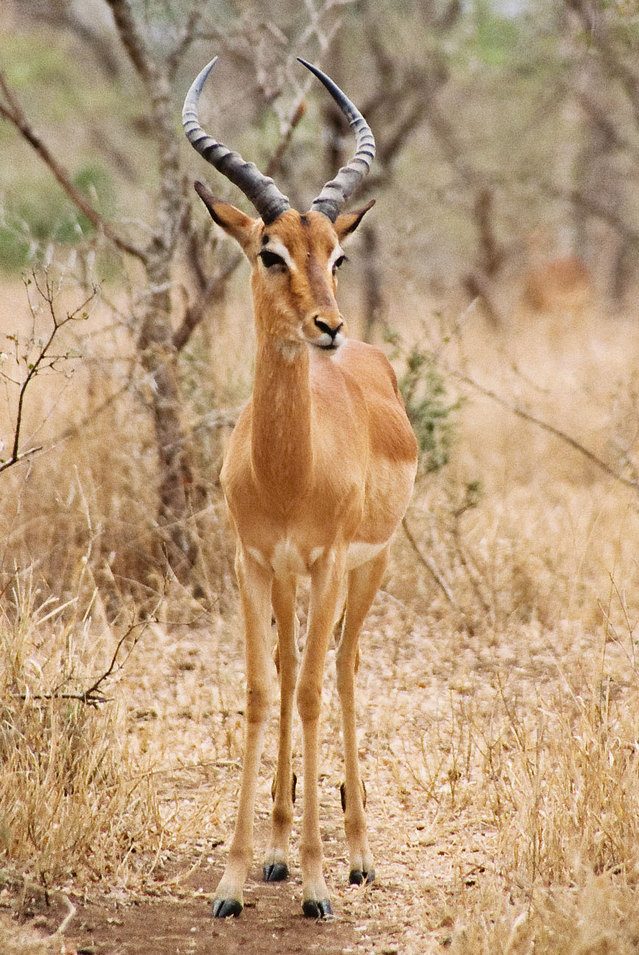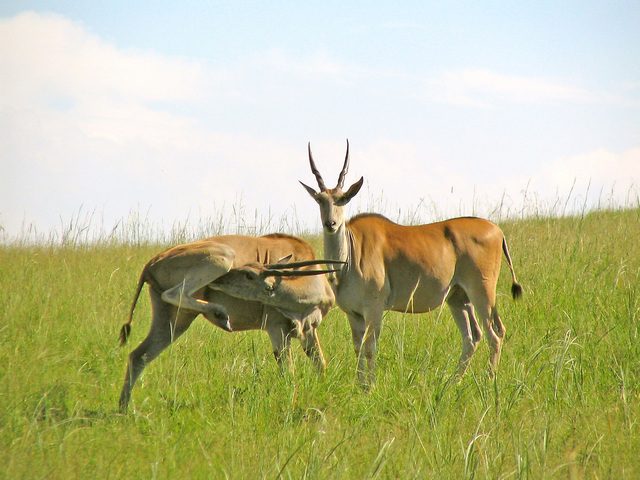The Friendly Wild Animals Of Kenya
The greater kudu
The longest-horned and tallest of the antelopes, the kudu, weighs around 600 pounds. It is known for its narrow-shaped body, large ears, long legs and brown coat with white torso stripes. Males are different from females because of their impressive six feet long spiral horns and fringe under their chins. Both the lesser and greater kudu have distinct spots and stripes covering their bodies. These distinctive markings camouflage them and protect them from predators. If threatened, they stand still and are extremely difficult to spot. They can also jump over 8 feet. These animals occur throughout Kenya in mixed woodlands, hills, bushlands and mountains. It eats leaves, flowers and fruits. They can live up to eight years. Females form small groups of 10 individuals and their young. Male kudus are solitary, but sometimes form teams of their own. The male is rarely aggressive in the wild, and their hierarchy depends on age and size. They join the females only during breeding season. These creatures are becoming very rare in some areas due to habitat loss, hunting, predation and disease. Human beings are converting much of their habitat to farmlands. Some people hunt it for its unique twisting horns and its hide. Hyenas, wild dogs and big cats also hunt the greater kudu.
Topographical body features
Coloration of the greater kudus varies individually and geographically. Males are chocolate brown to gray-brown, while females are bright to brown chestnut, and calves are rufous-red, spotted, striped and woolly coated. Adults are long coated with characteristic whitish marks on the ears, face, cheeks, body, feet and legs. Females are considerably smaller than males. The horns of the males are characterized by ivory tips and two twists.
Male female characteristics
Female greater kudus tend to form herds. Males are polygynous who associate together or with the opposite sex only until they are sub adults. When they turn to adults, they avoid each other. Males bark at night, as an alarm signal to announce their location. The bark of the females is higher pitched than the males. A suppressed roar is uttered by a male who follows the female.
Sitatunga in wetlands
The sitatunga is a semiaquatic, non-territorial, semi-social and sedentary animal that occurs only in permanent marshes or swamps. Partial to phragmites and papyrus within swamps, they also live in wetlands dominated by reeds, sedges and bulrushes. They frequent the innermost parts of the marshes. Swamps are productive ecosystems, and the animals can live at very high densities. They lie on platforms of vegetation that they prepare by repeated trampling and circling. They are active both nocturnally and diurnally and may move along established pathways into the marshes at night.
Food consumption behavior
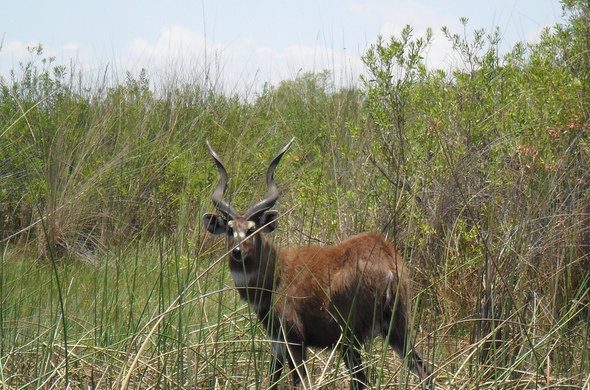
Sitatunga Source: African wildlife
Browsing takes place in both swamp and dry land. They often come out at night from swamplands to browse on foliage and creepers in nearby dry land and adjacent forests. But they feed at any hour where they feel protected. Feeding activity only happens in a small area for many days; then they shift to new grounds. They feed while immersed and move slowly through the vegetation. At times, they elevate the hind legs while immersing the forelegs. Sitatunga selects flowering stage plants. They may rear to reach tall reeds, grasses, sedges and foliage, and the males break branches with their horns. A sitatunga when feeding on long leaves wraps its tongue around them, pushes them into its mouth, and cuts them with its incisors. Alchornea, which is common in Lake Victoria, is a favorite for sitatunga. They also ruminate in the water.
Adapted water runner
Sitatungas are usually inconspicuous, clumsy and slow land runners. But they are good swimmers and their plunging run in the water works well. They exhibit elongation of the hooves with a wide splay and naked pad like design. Their splayed and broad hooves keep them from sinking in the ground as deeply as other animals. Also, this swamp-dwelling antelope possesses great flexibility of the feet joints representing adaptations for walking on marshy and boggy ground.
Manner of mating
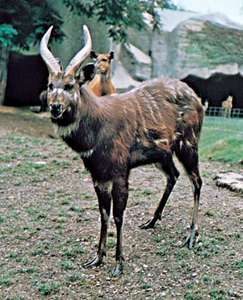
Source: Britannica
Breeding occurs throughout the year. A male approaches the female in a low stretch posture while she may back away slowly. When he comes within a few inches of her, she suddenly bounds away. Then a considerable commotion is caused in the swamp. The male continues to follow her, but always stays behind. When the male gets an opportunity, it lays his head on the female’s back while lifting his forelegs off the ground. The female responds with her neck winding and angling it down obliquely and turning her head sharply up, forward and then backward with her mouth wide open. At this moment, the male mounts on her back. This mounting attempt is characteristic of the sitatunga.
The calf’s life
The average gestation period is 247 days. Females produce a single calf at an average interval of 12 months. The mothers keep their calves hidden on platforms in secluded dry reeds that grow in deep water. The way the mother teaches the calf to stand on its own feet and fend for itself is fascinating. First, the mother licks the young’s snout before moving away. Then the calf follows the mother, and she guides it to a protected place to suckle. Calves follow their mothers this way for several months as they are unable to move deliberately like adults through the swamp. Sexual maturity of a calf is attained at approximately 1 year by both males and females.
Fighting for survival
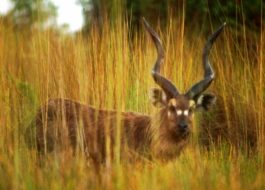
Sitata Source: African wildlife foundation
Wild dogs and lions prey on sitatungas. Leopards catch some that venture into the forest. Sitatungas are also vulnerable to snare-trappers because of their use of regular pathways. Beaters even drive them into deep water or into nets where spearmen in boats dispatch them.
Frequently Asked Questions About The Friendly Wild Animals Of Kenya
To receive a colourful digibook about animals with videos, images and text, please fill out the following form or simply email us on safaris@safari-center.com

